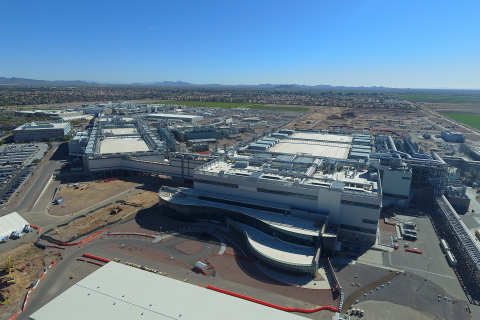
“Intel Unleased” Defined the Firm’s Strategy for Future Manufacturing and Innovation
- Intel will begin the construction of two new fabs in Arizona immediately to expand its IFS capacity.
- The chip-maker has confirmed that any issues with the 7nm fabrication process have been solved now.
- A collaboration with IBM in the R&D department creates great aspirations for the future.
Intel has held a virtual event named “Intel Unleased: Engineering the Future,” during which they announced several things to be excited about, mostly outlining what we should expect of the American chip-maker in the next couple of years and also how they’re planning to get back to a leadership position with new CEO Pat Gelsinger at the helm. The head of Intel explained how he envisions the development of a new integrated device manufacturing model, calling it the “IDM 2.0” and what that would entail exactly.
First of all, the firm announced manufacturing expansion plans, starting with two new mega fabs in Arizona, which are going to cost around $20 billion. This is very important for Intel as the company’s production lines are under great pressure.
The new units will open up 3,000 permanent high-wage jobs, 15,000 local long-term jobs, and 3,000 construction jobs, while the planning activities are expected to begin immediately. The new fabs will support both Intel’s products and will also offer additional capacity for IFS customers.
Next, updates on the 7nm manufacturing process were given, with the “Meteor Lake” compute tile to be taped in before the second quarter of 2021 is over. If that goes as promised, the new processor should hit the market at some point in 2023.
The same timelines apply for Intel’s data center 7nm CPUs, the “Granite Rapids.” Both will use the “Foveros” packaging technology that enables the combination of multiple IPs, allowing Intel to deliver highly tailored chips for diverse applications.
In terms of partnerships, Intel announced quite a few things on that aspect. First, the firm is planning to expand the use of third-party foundry capacity, so it’s planning to outsource more production to others. This will give the company greater flexibility and scale, hopefully allowing them to focus on optimizing costs, performance, supply, and scheduling. At the same time, its own IFS program will be expanded, and its capacity will increase.
On the R&D front, Intel will partner with IBM, launching a tight collaboration aiming to create next-gen logic and packaging technologies. This is a very important piece of news, as IBM possesses key cutting-edge tech knowledge, even if it doesn’t have a fab of its own anymore. We’re very excited to see what this cooperation will bring in the future.









